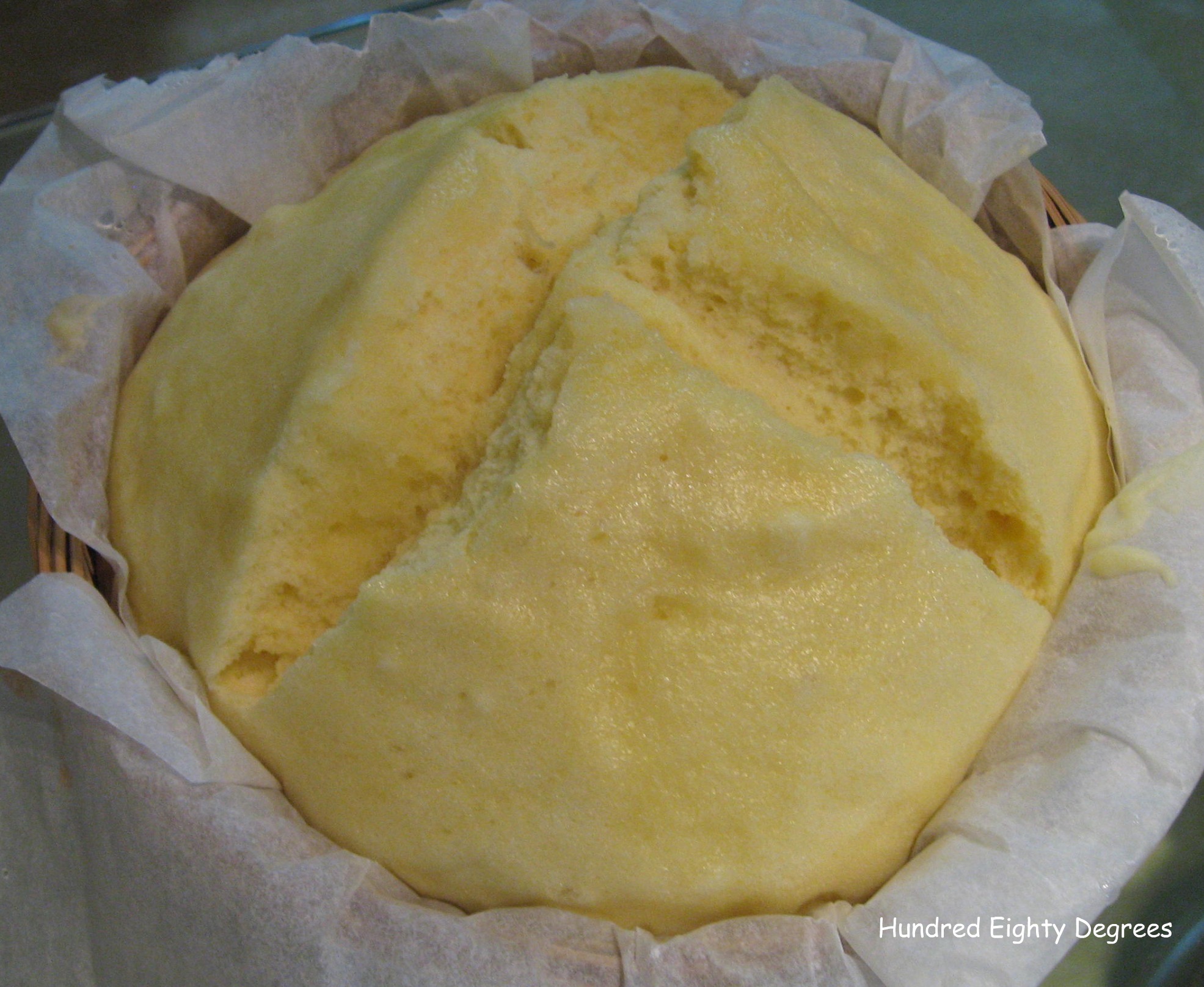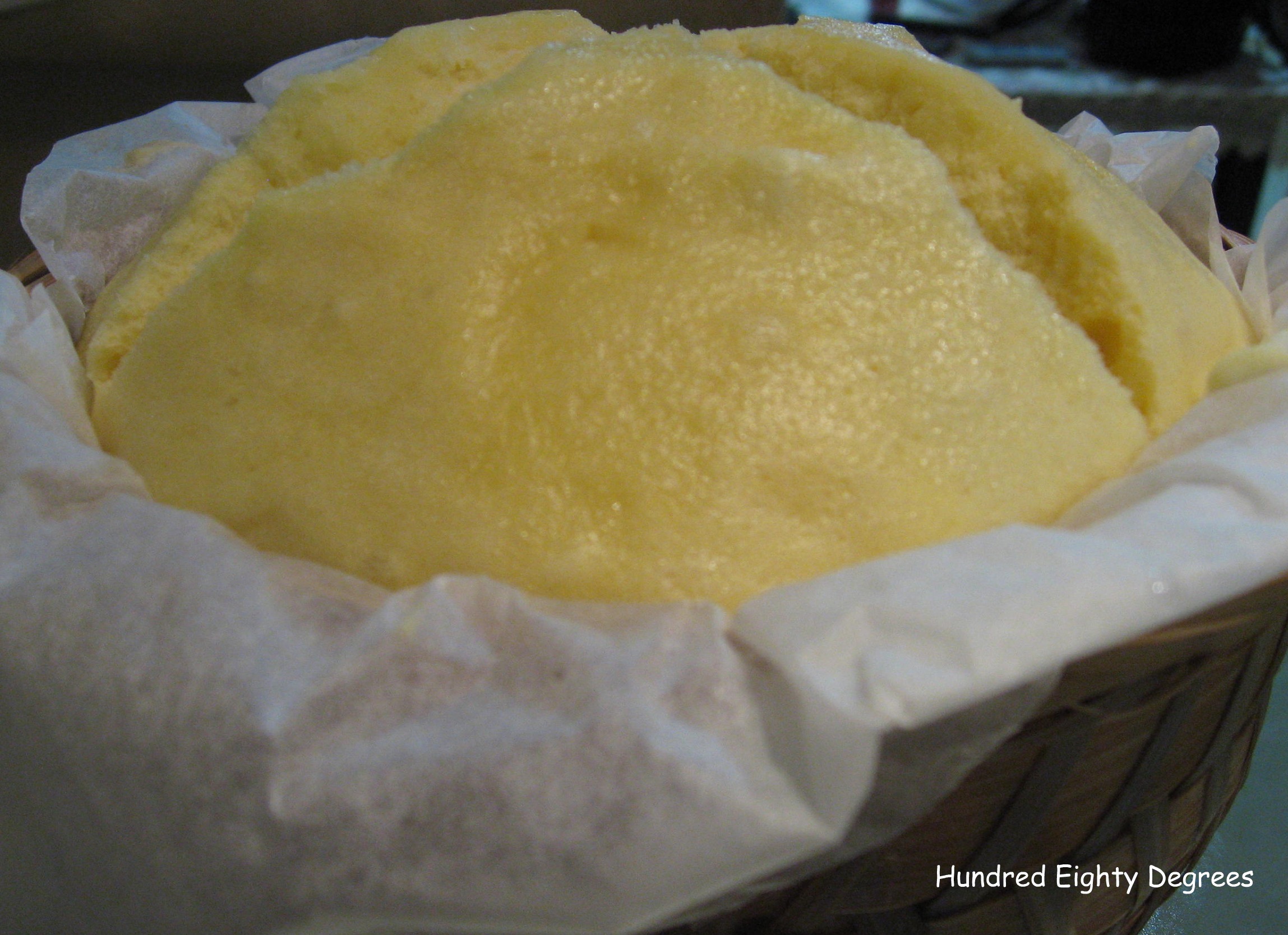In the realm of Chinese cuisine, Ji Dan Gao stands as a culinary gem, captivating taste buds with its delicate texture and rich flavors. This traditional sponge cake, also known as Steamed Egg Sponge Cake, holds a cherished place in Chinese culture and is often enjoyed during celebrations and special occasions.
Embark on a culinary adventure as we delve into the world of Ji Dan Gao. Discover the secrets behind its delightful taste, explore creative variations that tantalize the palate, and learn the art of presenting this exquisite dish in a visually stunning manner.
Let’s unravel the cultural significance of Ji Dan Gao and uncover the stories that make it an integral part of Chinese cuisine.
Ji Dan Gao Ingredients

Ji Dan Gao, a popular steamed sponge cake from China, requires a handful of simple ingredients to achieve its fluffy and flavorful texture. Let’s explore each ingredient and its purpose in this delectable treat.
Essential Ingredients
The key ingredients for Ji Dan Gao are eggs, sugar, flour, and oil. Eggs provide structure, richness, and moisture to the cake. Sugar adds sweetness and helps create a tender crumb. Flour provides the necessary structure and body to the cake.
Lastly, oil helps keep the cake moist and tender.
Additional Ingredients
Depending on personal preference and desired flavor variations, additional ingredients can be added to Ji Dan Gao. These include milk, vanilla extract, almond extract, and baking powder. Milk adds moisture and richness to the cake, while vanilla and almond extracts enhance its flavor profile.
Baking powder helps the cake rise higher and achieve a lighter texture.
Ingredient Alternatives
In case you don’t have certain ingredients on hand, here are some suitable alternatives:
| Ingredient | Measurement | Alternative | Purpose |
|---|---|---|---|
| Eggs | 2 large | 1 cup egg whites | Provides structure, richness, and moisture |
| Sugar | 1 cup | 3/4 cup honey | Sweetens the cake and helps create a tender crumb |
| Flour | 1 cup | 1 cup cake flour | Provides structure and body to the cake |
| Oil | 1/4 cup | 1/4 cup melted butter | Keeps the cake moist and tender |
| Milk (optional) | 1/4 cup | 1/4 cup water | Adds moisture and richness |
| Vanilla Extract (optional) | 1 teaspoon | 1/2 teaspoon almond extract | Enhances flavor profile |
| Baking Powder (optional) | 1 teaspoon | 1/2 teaspoon baking soda | Helps the cake rise higher and achieve a lighter texture |
Ji Dan Gao Methods
Making Ji Dan Gao involves a straightforward process that yields fluffy and delicious results. Here’s a step-by-step guide to help you achieve perfect Ji Dan Gao:
Preparing the Batter
- In a large bowl, whisk together the eggs and sugar until light and fluffy. This step incorporates air into the batter, contributing to the cake’s airy texture.
- Add the vegetable oil and water, and continue whisking until well combined.
- Sift in the flour and baking powder. Gently fold the dry ingredients into the wet ingredients until just combined. Overmixing can result in a dense cake.
Baking the Ji Dan Gao
- Preheat your oven to 350°F (175°C). Line a 9×13 inch baking pan with parchment paper for easy removal.
- Pour the batter into the prepared pan and spread it evenly.
- Bake for 20-25 minutes, or until a toothpick inserted into the center comes out clean.
- Allow the Ji Dan Gao to cool in the pan for 10 minutes before inverting it onto a wire rack to cool completely.
Tips for Success
- For a taller cake, use a smaller baking pan, such as an 8×8 inch pan.
- Do not overmix the batter, as this can result in a tough cake.
- If the edges of the cake are browning too quickly, cover them with aluminum foil during baking.
- Allow the cake to cool completely before slicing and serving for a cleaner cut.
Ji Dan Gao Variations

Ji Dan Gao’s simple recipe allows for a variety of flavor variations, making it a versatile treat. From sweet to savory, the possibilities are endless.
The key to creating unique flavors lies in incorporating different ingredients. These can range from fruits, nuts, and spices to savory additions like cheese and ham.
Popular Variations
- Matcha Ji Dan Gao: A vibrant green twist on the classic, made by adding matcha powder to the batter. This variation offers a subtly sweet and earthy flavor.
- Chocolate Ji Dan Gao: A decadent indulgence, achieved by folding melted chocolate into the batter. The result is a rich, chocolatey sponge cake with a light and airy texture.
- Strawberry Ji Dan Gao: A delightful combination of sweet and tart, made by swirling fresh strawberry puree into the batter. This variation is perfect for spring and summer gatherings.
- Savory Ji Dan Gao: A savory twist on the classic, made by adding grated cheese, diced ham, and chopped herbs to the batter. This variation is a great option for brunch or lunch.
Ji Dan Gao Presentation
The presentation of Ji Dan Gao can greatly enhance its visual appeal and overall enjoyment. Here are some creative ways to present this delicious steamed sponge cake:
Slicing and Plating:
- Cut the Ji Dan Gao into even slices, arranging them neatly on a serving plate. Sprinkle a light dusting of powdered sugar or cocoa powder on top for a touch of elegance.
- For a more intricate presentation, slice the Ji Dan Gao into smaller pieces and arrange them in a decorative pattern, such as a flower or a heart.
Garnishes and Accompaniments:
- Fresh fruits, such as sliced strawberries, blueberries, or raspberries, can add a pop of color and a burst of flavor to the Ji Dan Gao.
- Whipped cream or ice cream can be served alongside the cake, providing a creamy and涼爽的口感contrast to the fluffy texture of the sponge cake.
- Sprinkles, chocolate chips, or chopped nuts can be sprinkled on top of the Ji Dan Gao for a festive and fun touch.
Visual Demonstration:
| Sliced and Plated | Garnished with Fruits | Accompanied with Ice Cream |
|---|---|---|
 |
 |
 |
Ji Dan Gao Cultural Significance
Ji Dan Gao holds a significant place in Chinese cuisine, symbolizing prosperity, good luck, and unity.
Historical Origins and Symbolism
Ji Dan Gao’s history dates back to ancient China, where it was considered an auspicious dish served during festivals and celebrations. Its round shape represents completeness and harmony, while its golden-brown color signifies wealth and prosperity. The dish’s fluffy texture and sweet taste are believed to bring good fortune and happiness.
Anecdotes and Stories
Ji Dan Gao is often associated with stories of family and unity. In some regions of China, it is customary for families to gather around the kitchen and prepare Ji Dan Gao together, sharing laughter and stories as they create this special dish.
The act of sharing Ji Dan Gao is seen as a symbol of togetherness and harmony within the family.
In some cultures, Ji Dan Gao is also used as a symbol of good luck and prosperity. It is often served at weddings, birthdays, and other special occasions to wish the recipients happiness and success.
Summary
As we conclude our exploration of Ji Dan Gao, we find ourselves enriched with a deeper appreciation for this culinary masterpiece. Its versatility and cultural significance make it a cherished part of Chinese cuisine, enjoyed by generations and sure to continue captivating taste buds for years to come.
Whether you’re a seasoned chef or a culinary novice, we encourage you to embark on your own Ji Dan Gao journey, experimenting with different flavors and presentation styles. Share your creations with loved ones and create memories that will last a lifetime.
FAQ Section
What is the origin of Ji Dan Gao?
Ji Dan Gao is believed to have originated in Southern China during the Qing dynasty, where it was a popular delicacy served during celebrations and special occasions.
Can I substitute all-purpose flour with other types of flour?
Yes, you can use cake flour or self-rising flour as alternatives to all-purpose flour. Cake flour will result in a lighter and fluffier texture, while self-rising flour will give the cake a slightly denser texture.
How can I prevent my Ji Dan Gao from becoming too dense?
To avoid a dense texture, ensure that you whisk the egg whites until they reach stiff peaks before folding them into the batter. Additionally, do not overmix the batter, as this can also contribute to a denser texture.
What are some creative ways to present Ji Dan Gao?
You can garnish Ji Dan Gao with fresh fruits, whipped cream, or powdered sugar for a classic presentation. For a more modern twist, try serving it with a scoop of ice cream or a drizzle of fruit sauce.
